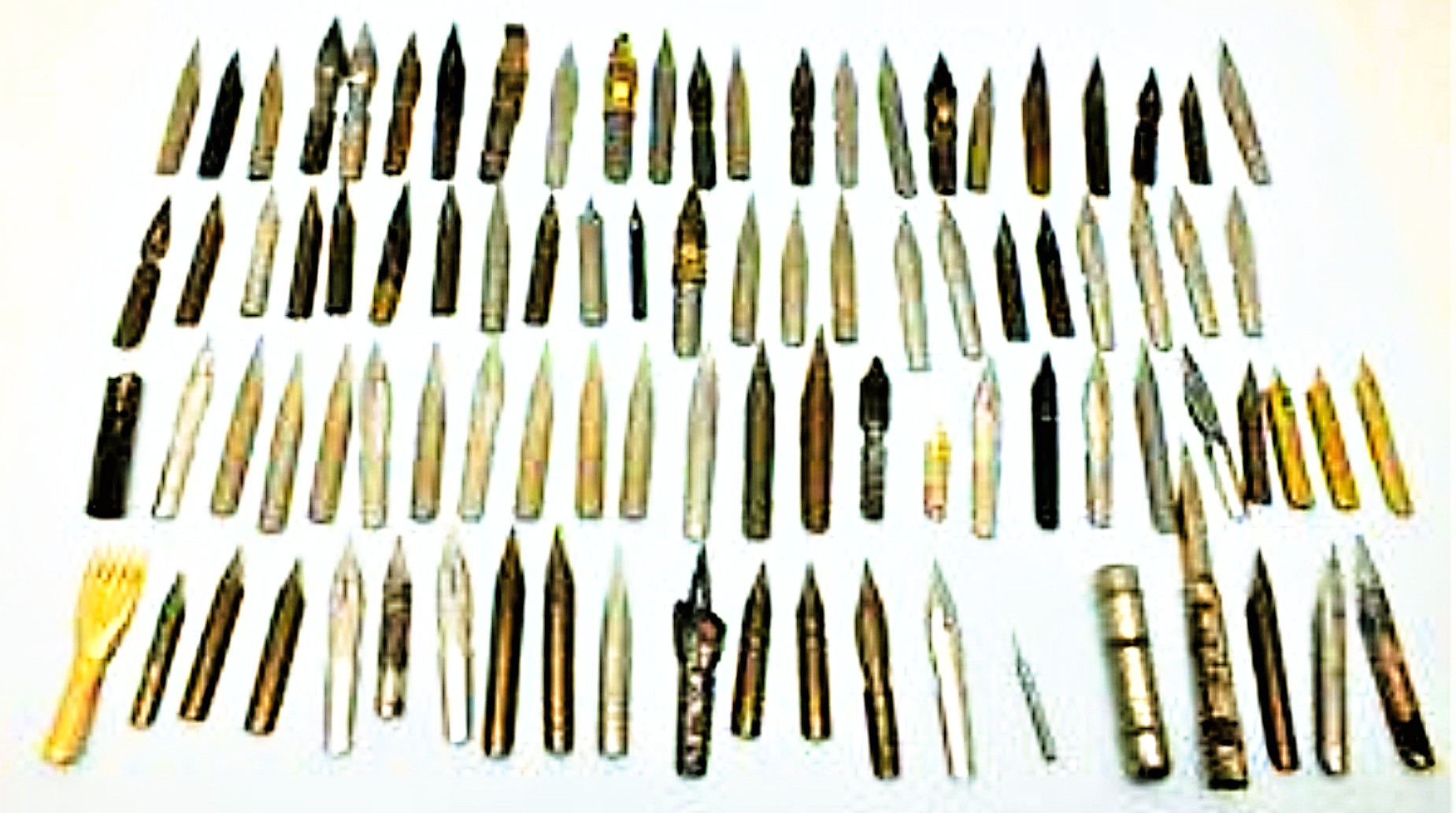
Inkipedia
Dip Pens
| Categories | Accessories |
| Date or Era | circa 1780 to early 20th century |
Dip Pen (Early Modern to Early 20th Century)
- Earliest Use: c. 1780s (metal nibs began to appear), widespread by 1830s
- Materials: A separate metal nib (steel, gold, or other alloys) inserted into a holder made of wood, bone, mother-of-pearl, or other materials.
- Steele Nibs: Pens with steel nibs were first produced commercially in 1858 by Richard Esterbrook, a manufacturer, at his factory in Camden NJ.
- Characteristics: Offered a more durable and consistent writing point than quills, which constantly needed re-cutting. Still required dipping into an inkwell after every few words.
- Significance: Revolutionized writing efficiency, leading to the decline of the quill. Mass production of steel nibs made writing more affordable and accessible.
- An assemblage of pen nibs – pictured.
- In the middle of the bottom row is a nib shaped like a hand, finger pointing. (It’s the index finger, not the middle finger).
- On the far left of the bottom row is a five-pronged nib, which would have been used by a composer to draw the musical staff.
Content disclaimer. The information posted is the owner’s best knowledge and may not have been vetted by the SOIC. We welcome comments, corrections, and additions, working to make our website information comprehensive and accurate.
Join the Society of Inkwell Collectors (SOIC) – it’s free!
Founded in 1981 as a non-profit organization,
we are documenting inkwells (and accessories).
We’re here to help and inform!

